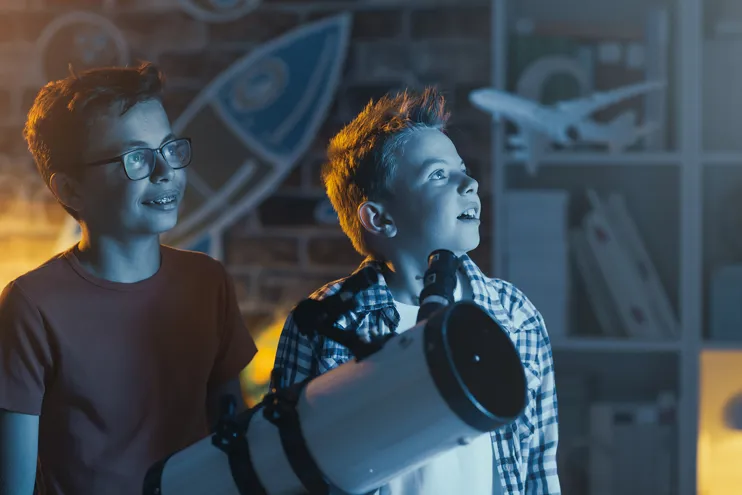Football may be the most popular game on the planet, but as the world's biggest international football tournament kicks off for 2023, engineering and technology experts predict the first match on the Moon could take place there as early as 2035, based on developments from the ‘big three’ space faring nations.
That’s according to our panel of scientists and engineers, who have outlined the innovations required for humans to have a competitive kickabout on the Moon’s surface once a lunar base has been established.
The panel of STEM experts has also created the first-ever Lunar Football Rule Book, to adapt the beautiful game to the vastly different conditions players can expect, including harsh, dusty terrain, zero oxygen and potentially fatal risks of collision – making lunar football a strictly non-contact sport. The IET’s predictions and rule development of Lunar Football aim to excite and educate children on what careers in science, technology, engineering, and maths can look like and inspire a generation of budding engineers and technologists.
Mehul Karia, a FA Centre of Refereeing Excellence Football Referee at Leicester City in the Community, said:
“Lunar Football is very different to football on Earth, but thanks to engineering experts you can really imagine how it might be played in the future. Despite some key changes to the game to accommodate the environment and factor in player safety, the rules are clear and make sense. It’s an exciting prospect – watch this space!”


Meet our expert panel
A team of engineers and technology professionals who have together predicted the future of Lunar Football.

Kids STEM Competition
A competition aimed at children aged between 4 to 13 years old. Help get our Moon United footballers of the future Moon-fit by designing the first ever football kit for the Moon.

Fun, free football and space activities
A collection of free downloadable activities for children.

Exciting careers in space and sport
Discover the exciting and varied engineering and technology careers and roles that could prove vital for work on the Moon in the future.
